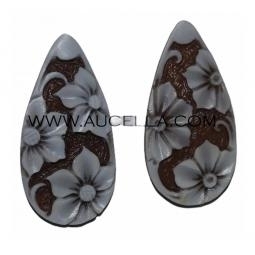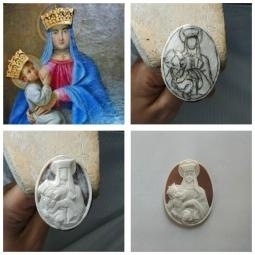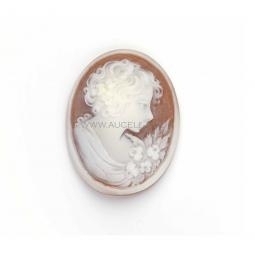The Myth on the Cameo
24-08-2021 What does "cameo" mean?
What does "cameo" mean? In cinematic language, the word cameo indicates a rapid appearance of a character. In the gemmological sector, on the other hand, a cameo refers to any incision that is made on different supports.
Over the centuries, the word "cameo" has been associated mainly with cameo engraving on a shell.
It is an engraving technique that falls within the glyptic, compared to the Florentine crushed. In the case of the cameo on a shell, the representation is developed by exploiting the different layers of the shell.
The cameo from the Hellenistic period
The myth of the cameo has its roots in a very distant past. Hundreds of finds deriving from the excavations of Pompeii were precisely engravings on semi-precious stones.These ancient cameos at the National Archaeological Museum of Naples and are waiting to be analyzed and cataloged.
It is in the Renaissance period that the cameo lives its splendor. In Florence important collections are still visible, such as the Medicea, which host important pieces, such as the Farnese Cup from the Hellenistic era.
The processing of the cameo
We have already talked about cameo engraving (https://www.aucella.com/blog/traditional-cameo-engraving) and we have named Cassis Rufa and Cassis Madagascarencies, as two types of shells used. These ones are shells with a double color.
In the case of the Cassis Rufa red on the background and beige on the surface, while for the Cassis Madagascarencies brown on the background and white on the surface.
The layering of the shells allows the engraver to extract the design, using different burins. It is with these tools that the superfluous is removed, to highlight the drawing.
Cameo processing was not born in Torre del Greco, but as for coral, it has established itself over time, becoming today the only city in the world where shells are engraved.
Before reaching Torre del Greco, the cameo manufacturing passed first through Rome and then through Naples. In fact, in Rome there were important families of engravers on agates and other semi-precious stones, who were then called to Naples to teach the ancient art of engraving.
In Torre del Greco Paolo Bartolomeo Martin had the brilliant intuition to install the first coral processing. In the city until that moment they only engaged in fishing for precious material.
He was responsible for the foundation of "La Real Fabbrica de 'Coralli", dedicated to the art of engraving on coral and later on cameo.
One of the most prestigious works of cameos on coral, which has shown our art in the world, is the Sword of Gala given to Napoleon Bonaparte by his sister Carolina Murat, kept in Fontainebleau, studded with coral cameos made by "La Real Fabbrica de 'Coralli ”of Torre del Greco.





Leave a Message
Click here to use Whatsapp